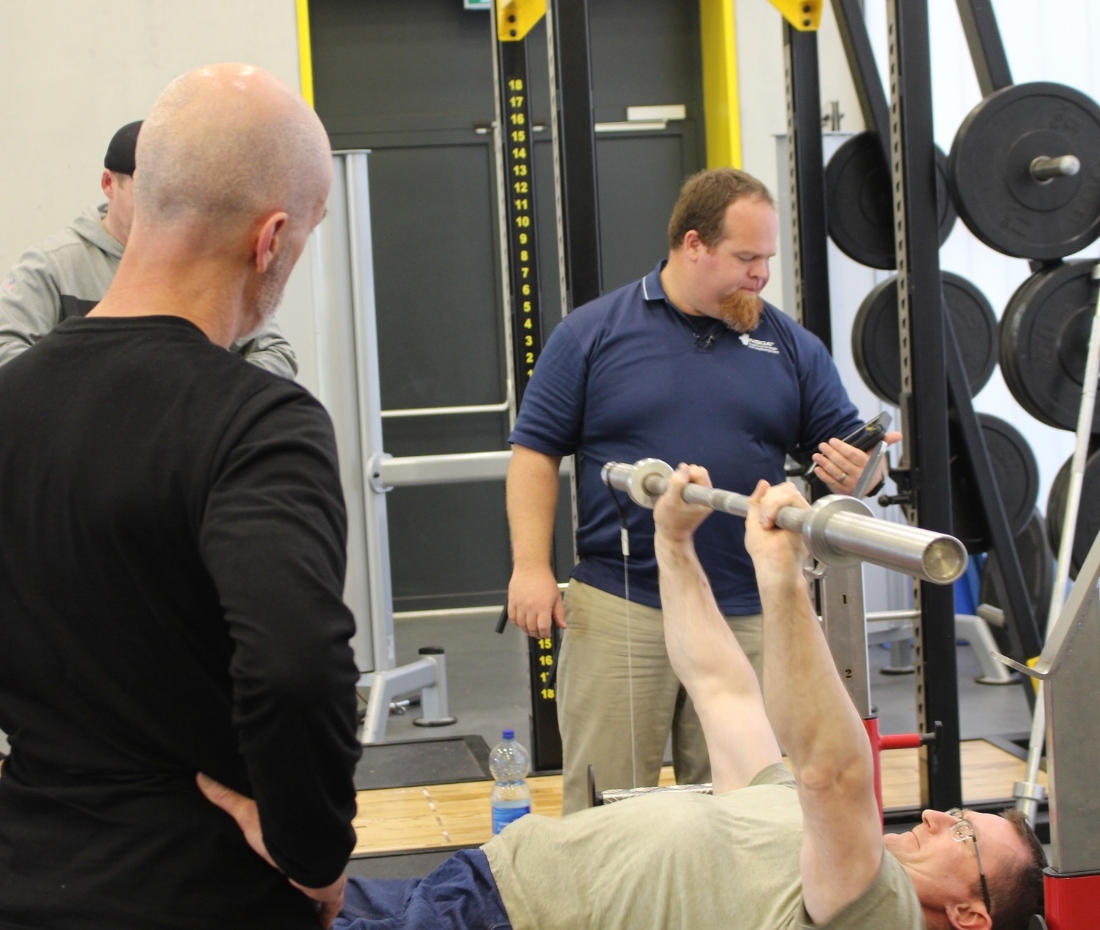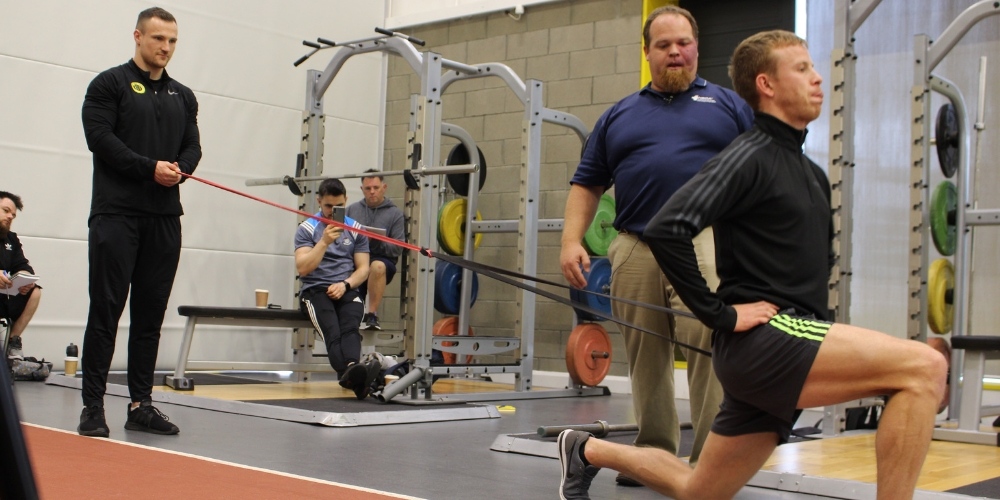In this episode of Setanta Talks, we had world-renowned Velocity Based Training expert, Bryan Mann come to Ireland to deliver a bespoke workshop on ‘Enhancing Athletic Potential’ and chat to Dr. Liam about his concepts, use of technology, and concerns as a coach.
It was a pleasure to host Bryan Mann at Setanta College last week. Bryan is the go-to -scientist and practitioner in Velocity Based Training. He is based in the USA and we were very fortunate that he accepted an invitation to come to Ireland as he had not visited Europe. His one-day workshop at the Sportslab was very well received by a cross-section of attendees from team sports, individual sports, weightlifting and powerlifting, personal training, and sport and exercise academia.

Dr. Liam Hennessy and Coach Bryan Mann.
Bryan covered a lot of solid principles and indeed shared valuable practical guidelines when using VBT. Some key points however were made and I would like to share one in particular with you. This concerns resources and face to face coaching. This is also an interesting comparison between the team training environment in Europe and the USA. While many of our team sports, between amateur and professional, may have between 20-40 in a squad, Bryan works within a team environment that has over 100 athletes training at the same time. So how on earth can he use VBT and individualise to each player within this environment?
While he does have S&C assistance the ratio of coach to player is often very low with one coach to 40 players or so. That is one reason why he uses velocity ‘zone’ training. It is simply a pragmatic response to his environment and circumstances. He and his staff are limited both in number and in time and cannot possibly apply an individualised approach with such a large group of athletes. In contrast here in Europe we frequently find that our teams are very well served with a good coach to player ratios where often we have 1:5 or 1:10 coach to player ratios within both amateur and pro team environments.

Bryan Mann takes a group of coaches through demonstrations at the Setanta College ‘Enhancing Athletic Potential’ workshop.
So VBT has a human resource requirement, especially within team sports. In addition, the technology used to assess velocity is another resource requirement. The cost of the units to assess velocity will indeed vary and while Bryan has a preference for GymAware units, other devices such as linear position transducers – e.g Fitrodyne and other isoinertial sensors such as the Push device are available for both team and individual use. They are becoming more affordable as well and what is often the barrier to using them is the know-how of the coach.
The whole debate when using technology within the training environment must however ask one fundamental question: How much actual coaching is taking place when technology is being used? Bryan answers that his number one focus is that of face to face coaching. And yes he is big into technology – but technology that serves a clear purpose and that does not interfere with the most fundamental of all – face to face coaching. While we could continue to reflect on Bryan’s approach to VBT this might be a great take-home message from his visit and to sign off here, for the moment. As S&C and Performance coaches let’s use technology to help us make better training decisions which ultimately benefit the athlete but while doing so let’s not take our eye off, literally, the most important focus and that is coaching and supporting the athlete.
To set up an appointment with a course advisor to find out more about where VBT features in our Master of Science in Performance Coaching, click the link https:/calendly.com/setantacollege/master-of-science


Leave A Comment